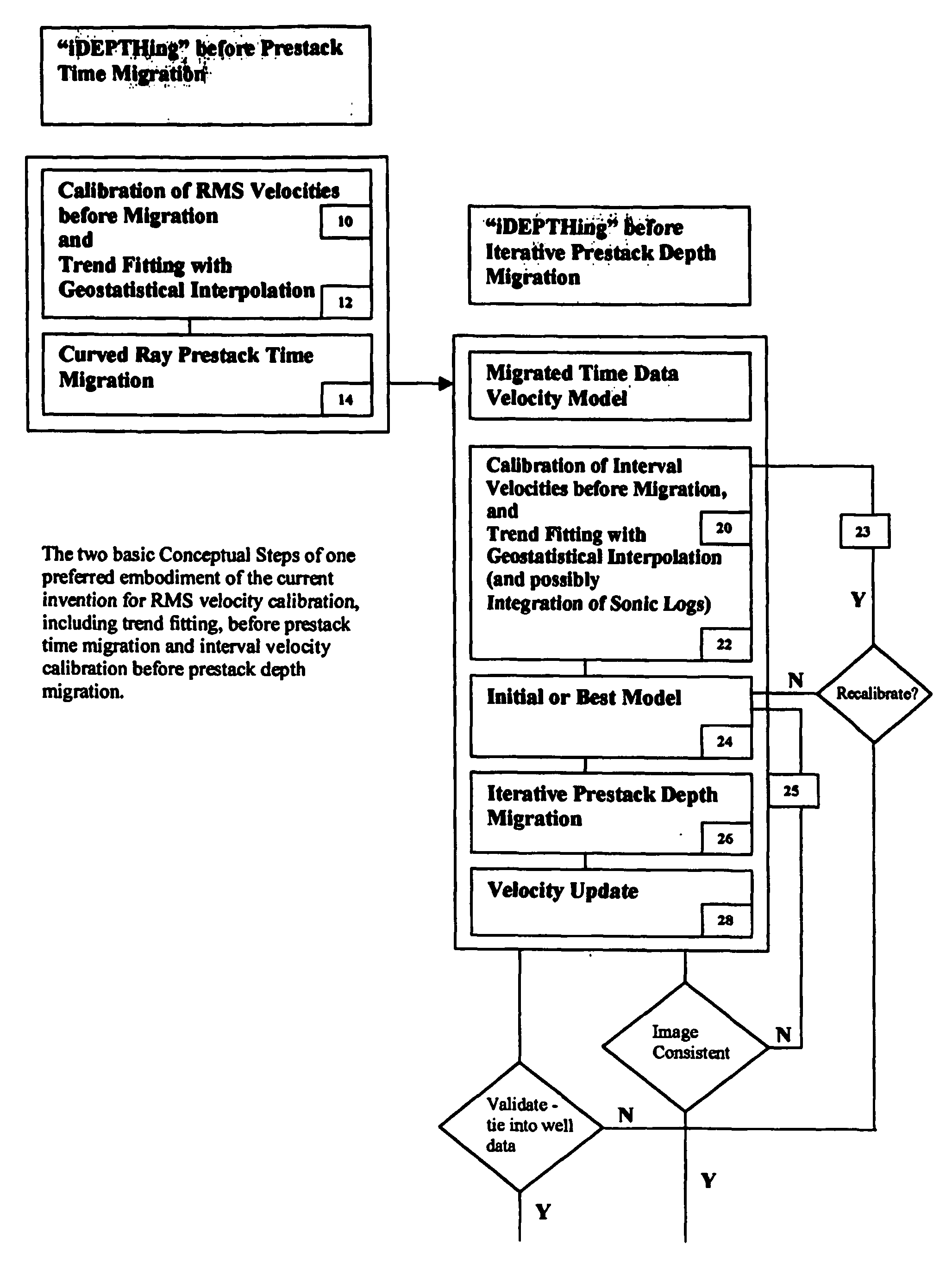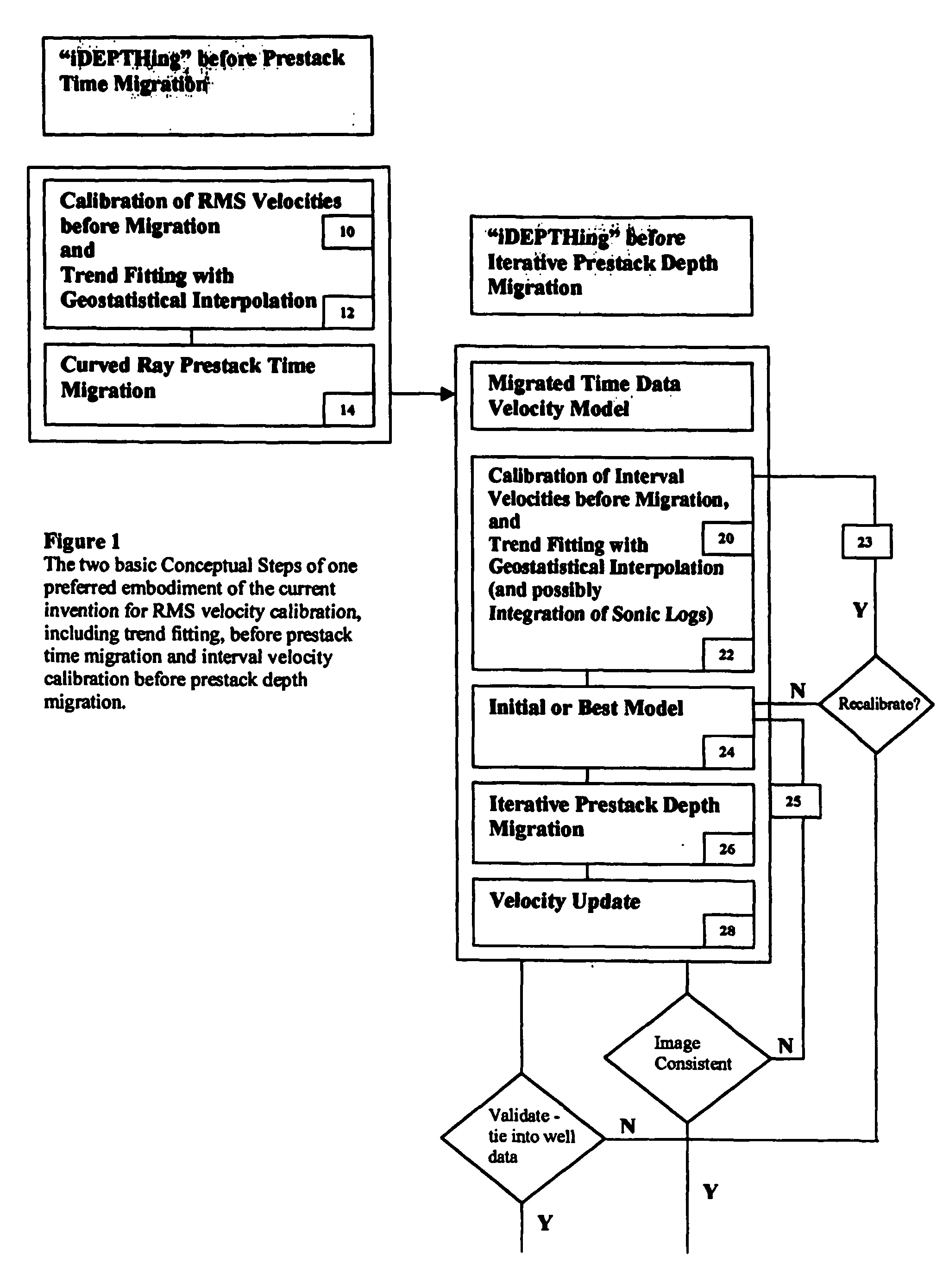3D velocity modeling, with calibration and trend fitting using geostatistical techniques, particularly advantageous for curved for curved-ray prestack time migration and for such migration followed by prestack depth migration
- Summary
- Abstract
- Description
- Claims
- Application Information
AI Technical Summary
Benefits of technology
Problems solved by technology
Method used
Image
Examples
Embodiment Construction
Discussion of Terms
Time And Depth Migration
[0051] Seismic migration methods are classified as either depth migration or time 5 migration. Depth migration honors lateral as well as vertical variations, utilizing different assumptions about the physics of seismic wave propagation. Time migration solutions ignore wave-field distortions created by lateral variations in seismic velocities. However simplistic, time migration is widely used because it is less computationally expensive. Curved-ray time migration is a recent advance in prestack time migration, which is sensitive to vertical velocity variations. However, it is only with the relatively recent advent of clustered PC processing that curved-ray prestack time migration has become generally available.
Checkshot Data
[0052] Checkshot is a method of determining an average velocity as a function of depth by lowering a geophone into a hole and recording energy from shots fired from surface shot holes. Checkshot is often run in add...
PUM
 Login to View More
Login to View More Abstract
Description
Claims
Application Information
 Login to View More
Login to View More - R&D
- Intellectual Property
- Life Sciences
- Materials
- Tech Scout
- Unparalleled Data Quality
- Higher Quality Content
- 60% Fewer Hallucinations
Browse by: Latest US Patents, China's latest patents, Technical Efficacy Thesaurus, Application Domain, Technology Topic, Popular Technical Reports.
© 2025 PatSnap. All rights reserved.Legal|Privacy policy|Modern Slavery Act Transparency Statement|Sitemap|About US| Contact US: help@patsnap.com



